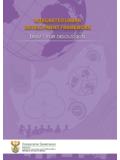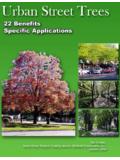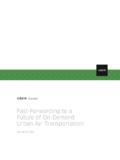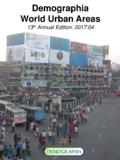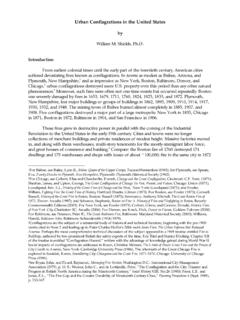Transcription of UNMASKING AND OVERCOMING HEALTH …
1 UNMASKING AND OVERCOMING HEALTH inequities IN urban SETTINGSWHO Library Cataloguing-in-Publication DataHidden cities: UNMASKING and OVERCOMING HEALTH inequities in urban HEALTH - trends. planning. style. HealthOrganization. Settlements 978 92 4 154803 8 (WHO) (NLM classification: WA 380) ISBN 978 92 1 132271 2 (UN-HABITAT) World HEALTH Organization, The WHO Centre for HEALTH Development, Kobe, and United Nations Human Settlements Programme (UN-HABITAT), 2010 All rights reserved. Requests for permission to reproduce or translate WHO publications whether for sale or for noncommercial distribution should be addressed to WHO Press,World HEALTH Organization, 20 Avenue Appia, 1211 Geneva 27, Switzerland (fax: +41 22791 4806; email: or to the WHO Centre for HEALTH Development,Kobe, Japan (phone: +81 78 230 3100; email: The designations employed and the presentation of the material in this publication do not imply the expression of any opinion whatsoever on the part of the World HealthOrganization, the United Nations Human Settlements Programme or the Secretariat of theUnited Nations concerning the legal status of any country, territory, city or area or of itsauthorities, or concerning the delimitation of its frontiers or boundaries or regarding itseconomic system or degree of development.))
2 Dotted lines on maps represent approximateborder lines for which there may not yet be full mention of specific companies or of certain manufacturers products does not implythat they are endorsed or recommended by the World HEALTH Organization or the UnitedNations Human Settlements Programme in preference to others of a similar nature thatare not mentioned. Errors and omissions excepted, the names of proprietary products aredistinguished by initial capital World HEALTH Organization and the United Nations Human Settlements Programme do not warrant that the information contained in this publication is complete and correctand shall not be liable for any damages incurred as a result of its analysis, conclusions and recommendations of this publication do not necessarilyreflect the views, decisions or policies of the World HEALTH Organization or the UnitedNations Human Settlements Programme or its Governing in AND OVERCOMING HEALTH inequities IN urban SETTINGSThe joint UN-HABITAT/WHO report Hidden cities.
3 UNMASKING and OVERCOMING HEALTH inequities in urbansettingsis the result of an intensive collaboration between the UN-HABITAT head office in Nairobi, Kenya,and the World HEALTH We would like to thank, for their valuable inputs in the form of contributions, peerreview, suggestions, criticism, boxes, figures and data analysis, all the following contributors: JonathanABRAHAMS, Fiona ADSHEAD, Andrew ADWERA, Muhammad Chaudhary AFZAL, Muhammad Mahmood AFZAL,Siddharth AGARWAL, Shunichi AKAZAWA, Daniel ALBRECHT, Ala ALWAN, Giuseppe ANNUNZIATA, Mina ARAI,Linda ARCHER, Francisco ARMADA, Tim ARMSTRONG, Lucia ARTAZCOZ, Oscar ARTEAGA, Mohsen ASADI-LARI,Mohammad Arkadani ASSAI, Enis BARIS, Francoise BARTEN, Mark BELLIS, Samir BEN YAHMED, Roberto BERTOLLINI,Ties BOERMA, Neil BOMBERG, Fernando BORGIA, Carme BORRELL, Richard BRADFORD, Lucy BRAUN,Alexander BUTCHART, Diarmid CAMPBELL-LENDRUM, Anthony CAPON, Paulo CAPUCCI, Giovanni CARACCI,Adriana Miranda CASTRO, Somnath CHATTERJI, Haejoo CHUNG, Carlos CORVALAN, Mario Roberto DAL POZ,John DAWSON, Jan DE MAESENEER, Sophia DESILLAS, lia D EZ, Carlos DORA, Milka DUNCHIN, Christopher DYE,Kristie EBI, Sarah ENGLAND, JoAnne EPPING-JORDAN, Jazla Saeed FADDA, Oscar FEO IST RIZ, BabatundeFASHOLA, Fariyal FIKREE, Elaine Ruth FLETCHER, Jean-Christophe FOTSO, Howard FRUMKIN.
4 Cecilia VidalFUERTES, Michelle FUNK, Pascaline GABORIT, Gauden GALEA, Sandro GALEA, Luiz A. Cassanha GALVAO, Loic GAR ON, Paul David GARWOOD, Tina GOULD, Geoff GREEN, Francis GRENIER, Steffen GROTH, MohamedHALFANI, Trevor HANCOCK, Jeremy HESS, Ahmad HOSSEINPOOR, Syed Jaffar HUSSAIN, Jide IDRIS, AkikoIMAI, Yoko INOUE, Aya ISHIZUKA, urban JONSSON, Megumi KANO, Mina KASHIWABARA, Seiya KATO, MakieKAWABATA, Rania KAWAR, Maura Erin KENNEY TISSOT, Meleckidzedeck KHAYESI, Anthony KOLB, SoewartaKOSEN, Etienne KRUG, Jacob KUMARESAN, Jostacio LAPITAN, Roderick John LAWRENCE, George LUBER,Pamela LYNAM, Hossein MALEK-AFZALI, Josephine MALILAY, Isaac MALONZA, Fernando MARIDES, MayaMASCARENHAS, Colin MATHERS, Richard MATZOPOULOS, Gora MBOUP, Michael MCGEEHIN, Richard MEDDINGS,Shanthi MENDIS, Bettina MENNE, Susan MERCADO, James MERCY, Stuart MERKEL, Christopher MIKTON, Linda MILAN, Khalif Bile MOHAMUD, Esther MOK, Eduardo MORENO, Ayako MORITA, Davison MUNODAWAFA,Carles MUNTANER, Nirmala Devi NAIDOO, Keiko NAKAMURA, Jai NARAIN, Benjamin NGANDA.
5 AlexandraNOLEN, Helena NYGREN-KRUG, Carla Makhlouf OBERMEYER, Hisashi OGAWA, Akihiro OHKADO, Keiko OKUDA,Danielle OMPAD, James OPERE, Victor ORINDI, Jane OTAI, Tikki PANGESTU, Heather PAPOWITZ, GregoryPAPPAS, Sukhumbhand PARIBATRA, David PARKER, Isabel PASAR N, Jonathan PASSMORE, Maria FernandaTourhino PERES, Julia PERRI, Armando PERUGA, Amit PRASAD, Thebe PULE, Meng QINGYUE, RavindraRANNAN-ELIYA, Romero REROMA, Marilyn RICE, Victor RODWIN, Maris ROMERO, Alex ROSS, Miki SAKAGUCHI,Priyanka SAKSENA, Gerardo SANCHEZ MARTINEZ, Luminita SANDA, Shekhar SAXENA, Hawa SENKORO, LoriSLOATE, Sanjeev SRIDHARAN, Mubashar Riaz SHEIKH, Xiaoming SHEN, Sarah SIMPSON, Ian SMITH, IleneSPEIZER, Hari SRINIVAS, Lihong SU, Malinee SUKAVEJWORAKIT, Ryoko TAKAHASHI, Junko TAKEBAYASHI,Paulo TEIXEIRA, Kristin THOMPSON, Mauricio TORRES, Carlos Alberto TORRES TOVAR, Adewale TROUTMAN,Agis TSOUROS, Kazuhiro UCHIMURA, Hiroshi UEDA, Mohammad R. VAEZ-MAHDAVI, Nicole VALENTINE, Wim VAN LERBERGHE, Emese VERDES, Eugenio VILLAR MONTESINOS, David VLAHOV, Elizabeth WARD, Fan WU, Ke XU, Mariko YOKOO, Itsuro YOSHIMI, Hongwen ZHAO, Sarah ZINGG We are very grateful to all the experts and colleagues who kindly agreed to review the : Suazion, Inc.
6 ( )COVER PHOTO: WHO/Anna KariNOTE: Examples from specific cities are used to illustrate different points within this report. These examples shouldnot be interpreted as assessments of cities overall level of HEALTH equity, nor should they be taken to mean that anycity is more or less advanced than other cities in terms of its action to tackle the root causes of urban HEALTH inequities . CONTENTSHIDDEN CITIES: UNMASKING AND OVERCOMING HEALTH inequities IN urban SETTINGSIFOREWORDSIVEXECUTIVE SUMMARYVIIPART ONE. THE DAWN OF AN urban WORLD1 INTRODUCTION TO PART ONE2 CHAPTER 1. THE RISE OF MODERN CITIES3 DEMOGRAPHICS OF URBANIZATION AND TRENDS4 THE BENEFITS OF URBANIZATION6 THE CHALLENGES OF RAPID, UNPLANNED GROWTH7 CITIES OF THE FUTURE10 CHAPTER SUMMARY10 CHAPTER 2. HEALTH IN AN urban CONTEXT11 DETERMINANTS OF HEALTH12 HEALTH DETERMINANTS IN urban SETTINGS12 HEALTH CONSEQUENCES OF LIVING IN CITIES28 CHAPTER SUMMARY29 PART TWO. UNMASKING HIDDEN CITIES31 INTRODUCTION TO PART TWO32 CHAPTER 3.
7 urban HEALTH INEQUITY AND WHY IT MATTERS33 HEALTH INEQUALITY AND HEALTH INEQUITY EXPLAINED34 WHY urban HEALTH INEQUITY MUST BE UNMASKED AND OVERCOME35 urban HEALTH EQUITY IS RELATED TO HUMAN RIGHTS AND INTERNATIONAL FRAMEWORKS37 CHAPTER SUMMARY38 CHAPTER 4. urban HEALTH inequities REVEALED39 HEALTH inequities BETWEEN RICH AND POOR urban POPULATIONS40 HEALTH inequities BETWEEN NEIGHBOURHOODS49 HEALTH inequities BETWEEN SUBGROUPS OF CITY DWELLERS54 CHAPTER SUMMARY56 CHAPTER 5. ACHIEVING THE MILLENNIUM DEVELOPMENT GOALS57 INTRODUCTION TO THE MILLENNIUM DEVELOPMENT GOALS58 MDG 1: ERADICATE EXTREME POVERTY AND HUNGER59 MDG 4: REDUCE CHILD MORTALITY62 MDG 5: IMPROVE MATERNAL HEALTH64 MDG 7: ENSURE ENVIRONMENTAL SUSTAINABILITY66 CHAPTER SUMMARY67 CONTENTSPART THREE. OVERCOMING urban HEALTH INEQUITIES69 INTRODUCTION TO PART THREE70 CHAPTER 6. urban GOVERNANCE FOR REDUCING HEALTH INEQUITIES71 THE ROLE OF LOCAL GOVERNMENTS72 PARTNERSHIPS: THE KEY TO GOOD urban GOVERNANCE72 PREREQUISITES FOR LOCAL ACTION75 CHAPTER SUMMARY79 CHAPTER 7.
8 BUILDING AN EVIDENCE BASE FOR ACTION81 THE IMPORTANCE OF EVIDENCE FOR SUSTAINABLE AND EFFECTIVE ACTION82 THE IMPORTANCE OF DISAGGREGATED DATA83 DATA CONSIDERATIONS 83 WHO S urban HEART84UN-HABITAT S URBANINFO87 CHAPTER SUMMARY88 CHAPTER 8. TAKING ACTION89 THREE MAIN APPROACHES TO REDUCING urban HEALTH inequities 90 CHOOSING PRIORITY INTERVENTIONS 93 MONITORING AND EVALUATION 96 CHAPTER SUMMARY 96 CONCLUSION: THE PRICE AND THE PROMISE OF OUR urban WORLD97A ROLE FOR ALL: WHO CAN DO WHAT?100 ANNEXES103 ANNEX A. ADDITIONAL RESOURCES AND TOOLS104 ANNEX B. METHODOLOGICAL APPROACH FOR ASSESSING urban HEALTH INEQUITIES106 ANNEX C. EXAMPLES OF INTERVENTIONS109 REFERENCES118 BOXESBox Healthy Cities around the world (by WHO region)7 Box Spotlight on Nairobi s slums8 Box Spotlight on cities vulnerable to sea level rise9 Box Climate change: a multiplier of HEALTH risks17 Box Spotlight on Haiti s earthquake27 Box Spread of SARS via urban centres28 Box The eight Millennium Development Goals58 Box Spotlight on Nakuru, Kenya72 Box Spotlight on community participation in urban areas of Catalonia, Spain73 Box Spotlight on community participation in the urban slums of Nairobi, Kenya76 Box Spotlight on the London HEALTH Inequalities Strategy77 Box Spotlight on supportive governance structures in Vancouver, Canada77 Box Recommendations for national policy-makers on intersectoral action on health78 Box Disaggregating national-level data.
9 An example from India84 Box Spotlight on Para aque City, Philippines86 Box Spotlight on lady HEALTH workers in urban slums of Pakistan92 Box Improving water and sanitation in towns of the Lake Victoria region, East Africa92 Box Spotlight on helmet use92 Box Community mobilization against violence in Brazil94 CONTENTSHIDDEN CITIES: UNMASKING AND OVERCOMING HEALTH inequities IN urban SETTINGSIIFIGURESF igure Factors influencing the HEALTH of citiesXIFigure Under-five mortality rate in urban areas, by region, in 42 low- and middle-income countriesXIVF igure Where do city dwellers live in slums?9 Figure Determinants of health12 Figure Factors influencing the HEALTH of cities13 Figure Inequity in chronic malnutrition among children less than five years of age for 47 developing countries, comparing urban to rural inequalities (1994 2004)35 Figure Under-five mortality rate in urban areas, by region, in 42 low- and middle-income countries40 Figure Under-five mortality rate in urban areas of seven selected countries41 Figure Chronic malnutrition among children less than five years of age, by region, in 41 low- and middle-income countries42 Figure Chronic malnutrition among children less than five years of age in urban areas of seven selected countries42 Figure Factors that contribute to inequities in childhood malnutrition among children less than five years of age in urban areas of seven selected countries43 Figure Skilled birth attendance coverage, by region, in urban areas of 44 low- and middle-income countries44 Figure Skilled birth attendance coverage in urban areas of seven selected countries44 Figure Factors that contribute to inequities in skilled birth attendance.
10 In urban areas of seven countries45 Figure Prevalence of self-reported diabetes diagnosed by a physician, adults age 45 and older, urban Bangladesh (low-income country)47 Figure Prevalence of self-reported diabetes diagnosed by a physician, adults age 45 and older, urban Tunisia (middle-income country)47 Figure Prevalence of self-reported diabetes diagnosed by a physician, adults age 45 and older, urban Spain (high-income country)47 Figure Percentage of households with access to piped water, in urban areas of 44 low- and middle-income countries48 Figure inequities in access to piped water in urban areas from seven selected countries49 Figure Infant death rates, Nairobi, Kenya50 Figure Death rates in children less than five years of age, Kenya, disaggregated by Nairobi neighbourhood50 Figure Newly notified TB case rate per 100 000 population, largest cities in Japan, 200651 Figure Homicide rates vary by a factor of four between subdistricts of Cape Town, South Africa, 2001 200452 Figure Geographical relationship between percentage of residents living in poverty and likelihood of dying from AIDS, New York city, United States53 Figure Income inequalities and crime and disorder inequalities, Preston, United Kingdom.










